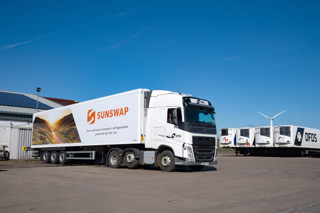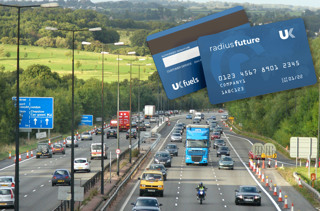Lowering carbon emissions for vehicles has been on the UK's agenda for some time now, and from 2030 onwards new internal combustion engine (ICE) cars and vans will no longer be sold in the country.
Hybrid vehicles will follow suit from 2035, however, there is uncertainty as to when heavy goods vehicles (HGVs) will be able to make the transition to fully electric.
It may take decades for ICE vehicles to be fully phased out, however the introduction of clean air zones (CAZs) across the UK could hurry the transition to an all-electric future.
CAZs will require individuals and businesses to pay a charge for a vehicle before they enter a CAZ.
Currently, there are seven CAZs across the UK, with an additional ‘Category C’ zone set to launch in Manchester on May 30, 2022 that will place charges on buses, coaches, taxis, private hire vehicles, HGVs, vans, and minibuses, whilst light goods vehicles (LGVs) will be exempt until 2023 (at the time of writing this is under review).
These charges add to the steadily increasing prices of fuel, as well as congestion zones and toll roads, meaning that many companies might be feeling the squeeze, as well as a dent to their profit margins.
How do CAZs operate?
CAZs have varying rules across different cities.
For example, driving a van from London to Birmingham would mean having to interact with London’s ultra low emission zone (ULEZ) and congestion charges at one end of the route and Birmingham’s own CAZ at the other.
If you forget to pay even one of these, your business risks the potential of three-figure fines.
Another pain point for fleets to consider is that each payment lasts until 12pm that day, so if a driver enters a CAZ at 11.59pm and leaves at 12.01am then their organisation will be liable for two days.
Typically, drivers and fleets have a twelve-day window – six days before and six days after – to pay a fee, via the Government’s CAZ website.
The zones themselves will be clearly marked, eliminating the danger of entering them by mistake, however sat nav systems might not notify a driver, meaning that it is often too late, and the route becomes unavoidable. There are however apps to help you avoid CAZs.
Businesses can create accounts with the Government and submit the registration of their vehicles to check whether they are subject to CAZ charges and pay charges online.
They can also add ten users to manage an account. This is currently the most convenient way for small to mid-size fleets to manage CAZ charges, though it remains to be seen whether they will be adequate for much larger fleets.
How can businesses reduce or avoid charges?
It goes without saying that businesses should never avoid charges through dishonest means. However, it is important to remember that even if your fleet includes ICE vehicles, you may not be charged if they can meet emissions standards.
Currently, HGVs must meet the Euro 6 emissions standard, based on how much carbon monoxide, hydrocarbon, nitrogen oxide and other chemicals.
This standard is Euro 6 for diesel and Euro 4 for petrol cars and vans.
Many of your vehicles may already pass this standard, and for the time being, you are not affected.
Electric vehicles (EVs) are exempt, meaning that the initial costs involved in switching to them, may pay off sooner than originally planned.
To avoid charges for HGVs, using hydrogen, hybrid fuel or an ultra-efficient modern diesel engine will also allow your company to skip CAZ charges.
There is little to worry about if a company operates within a relatively small area that doesn’t have a CAZ in place, but if it works nationally then fleet managers could find their vehicles frequently enter CAZs and incur charges.
In order to avoid entering CAZs and incurring charges, fleet operators will have to plan routes carefully, use alternative methods, such as LGVs and stay up to date with rules.
Offsetting costs elsewhere
It will be unavoidable to pay certain charges due to CAZ routes, however by using a fuel card, your fleet will be able to make savings through purchasing fuel more efficiently and reducing the administrative burden of processing expense claims, freeing up enough capital to offset the cost of CAZ charges.





















Login to comment
Comments
No comments have been made yet.